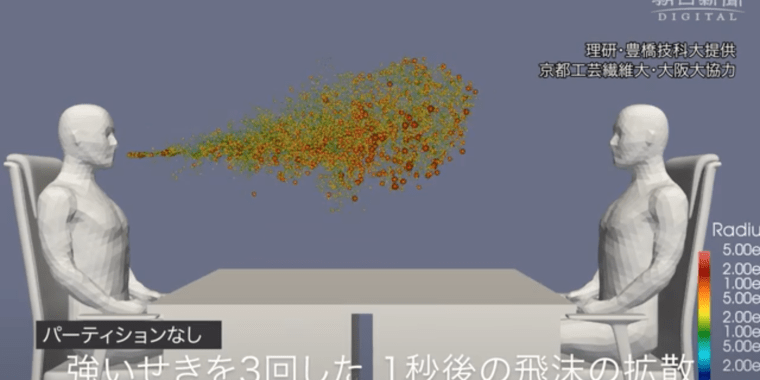
The 416 quadrillion reasons why Japan’s supercomputer is number 1
Fugaku’s compute power focus on parsing earthquakes, weather patterns, and coughs. …

reader comments
83 with 56 posters participating
For a good part of last week, the unrivaled highlight of Japanese television—looped on news programs—was a short computer simulation of a salaryman sitting at his desk and coughing. Its primetime primacy is total: this cough is the Killing Eve of animated expectoration.
The imagined office in the video, like tens of thousands of its real-life equivalents around Japan, appears carefully prepared for the great return to work and new normal of life under COVID-19. The desks are separated by decent physical space and sensible plastic partitions cleave the landscape.
But it is all in vain. As the simulation shows in terrifying particulate detail, while most of the army of droplets released from the cougher’s mouth are blocked by the screens, a crack platoon makes it over the partition, delivering its deadly payload into the neighbouring workspace.
The reason this simulation is so compelling—and why Japan is so enchanted with it—is how it was produced: on a $1 billion-plus made-in-Japan machine called Fugaku, whose brisk operating speed of 416 quadrillion calculations per second officially makes it the world’s fastest supercomputer. Fugaku, jointly developed between the Riken institute and Fujitsu, has the same energy demand as a small city, but—at a time when analyzing such things has never been so important—it allows us to see why, with agonizing molecular accuracy, this health crisis is proving such a tough nut.
Fugaku’s processing pace, clocked at 2.8 times that of the US-built Summit machine it has now unseated, also puts a Japanese supercomputer back
Continue reading – Article source




